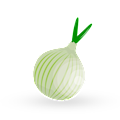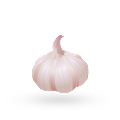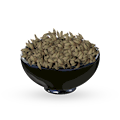MAIN INGREDIENTS
Pacalpörkölt is a traditional tripe stew. It is typically prepared in a cauldron hanging over an open fire, but it can also be prepared at home. The dish consists of tripe, onions, garlic, paprika powder, and hot peppers. When the stew is ready to be served, it is recommended to pair it with fresh bread, pickles, and boiled potatoes.
MAIN INGREDIENTS
Főzelék is a thick vegetable stew originating from Hungary. Although it can be prepared with most vegetables, it's usually made with peas, spinach, lentils, potatoes, or cabbage as the main ingredient, along with a combination of onions, butter or lard, and flour, milk, or sour cream for thickening.
It is believed that főzelék has been prepared in Hungary since the 16th century. Nowadays, it's usually served on its own on weekdays, and as an accompaniment to meat on festive days.
MAIN INGREDIENTS
Hamisgulyás is a traditional goulash that doesn’t contain any meat, which is why it’s also called mock guylás. Apart from meat, this version contains all the usual ingredients: carrots, turnips, potatoes, onions, and garlic.
This flavorful combination of vegetables is spiced with salt, red pepper, and chopped parsley. Hamisgulyás can be served with homemade dumplings, crusty bread, or a dollop of sour cream.
MAIN INGREDIENTS
Fiš paprikaš (or hal paprikas in Hungary, with the addition of sour cream) is a traditional stew cooked in a big cauldron over an open fire. This spicy fish stew is traditionally made with a variety of freshwater fish such as catfish, starlet, pike, and carp.
The stew is heavily flavored with large amounts of the region's staple – ground red paprika, which can range from mild to very hot. Fiš paprikaš is often served with homemade noodles, and it is so popular in the region that there are numerous fiš cooking competitions organized throughout the year.
MAIN INGREDIENTS
Csángó gulyás is a traditional goulash prepared in the style of the Csángó people, a Hungarian ethnic group that lives in Romanian Moldova. The goulash combines beef or pork, onions, paprika, caraway, sauerkraut, and rice.
All the ingredients are cooked together and spiced with grated garlic and some salt. This hearty stew is typically served with a dollop of sour cream, but it can also be accompanied by homemade dumplings or crusty bread.
MAIN INGREDIENTS
Paprikás krumpli is a Hungarian stew based on potatoes, tomatoes, onions, garlic, paprika, and optional sausages. The dish was originally prepared by shepherds, and it is still usually prepared in rural areas despite its popularity, so it is rarely seen in restaurants.
Paprikás krumpli is easy to prepare and can be cooked either on the stove or in a bogracs (lit. a pot). The quality of the dish depends on three main ingredients - grease, paprika, and potatoes. It is recommended to serve the stew with pickles and fresh bread.
MAIN INGREDIENTS
Often considered to be the predecessor to cholent, sólet is a Hungarian-Jewish stew that is traditionally slowly cooked on Friday night before the Sabbath. The stew consists of beans, paprika, onions, potatoes, boiled eggs, and meat such as smoked pork, duck, beef, or goose.
The next day, this hearty and nutritious stew is ready to be consumed.
MAIN INGREDIENTS
Harcsapaprikás is a traditional fish paprikash originating from Hungary. The dish is usually made with a combination of catfish, sour cream, sweet paprika powder, flour, tomatoes, shallots, butter, green peppers, salt, and black pepper. The fish is cut into chunks, seasoned with salt and pepper, coated in paprika and flour, and then shortly fried.
The shallots and green peppers are sautéed in a pot, and then covered with water and tomatoes. After a few minutes of cooking, paprika, flour, and fish are added to the pot, and sour cream is mixed in a few minutes before serving the stew. Harcsapaprikás is often served with a mixture of pasta, bacon, sour cream, and cheese on the side.
Slambuc is a traditional shepherd's dish made with a combination of bacon, lebbencs pasta, potatoes, lard, garlic, and hot paprika peppers. What's important is that the dish should always be prepared in a cauldron over an open fire, and if it isn't, it can't be called slambuc.
The ingredients are slowly simmered until the water evaporates. During the preparation, the cauldron is shaken, not stirred, so that the surface crisps up evenly. According to slambuc purists, it should be turned over in the cauldron 32 times. This humble stew originates from Hajdú-Bihar county, and it's believed that it was first prepared in Hortobágy.
MAIN INGREDIENTS
Nyúlpaprikás is a traditional rabbit stew. In the traditional recipes, almost the entire rabbit, apart from the bones, is used for the stew. Other main ingredients for the stew include onions, garlic, red peppers, and tomatoes. Some recipes also add mushrooms, red or white wine, and bacon.
Nyúlpaprikás is usually served with spätzle, a type of pasta traditionally used in Hungarian cuisine. It can also be served with pickles and potatoes. This dish spread from the Hungarian countryside, where people often enjoyed hunting rabbits and other game.
TasteAtlas food rankings are based on the ratings of the TasteAtlas audience, with a series of mechanisms that recognize real users and that ignore bot, nationalist or local patriotic ratings, and give additional value to the ratings of users that the system recognizes as knowledgeable. For the “10 Worst Rated Hungarian Stews” list until April 19, 2025, 1,142 ratings were recorded, of which 783 were recognized by the system as legitimate. TasteAtlas Rankings should not be seen as the final global conclusion about food. Their purpose is to promote excellent local foods, instill pride in traditional dishes, and arouse curiosity about dishes you haven’t tried.











